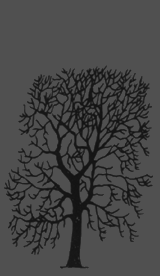About Wood|Species

Chestnut
American Chestnut
Native to eastern North America, this large, deciduous tree of the Beech family was a prolific member of forests throughout the area. Once an important hardwood timber tree, the American Chestnut has been nearly wiped out by the unfortunate introduction of an Asian bark fungus, commonly known as Chestnut Blight. Several organizations are attempting to breed blight-resistant trees in the hope of reforesting the southern savannahs. Rapidly growing, this tree reached up to 100 ft (30 m) tall and 10 ft (3 m) in diameter, and ranged from Main to Mississippi. There are a few stands of American Chestnut remaining, found in Ohio and Wisconsin, outside of the blight’s range.
The American species of chestnut C. dentate can best be identified by larger and more widely spaced saw-teeth on the edges of its leaves. These leaves are 5-8 inches (14-20 cm) long and tend to be shorter than other varieties of chestnut. The flowers, borne in early summer, are individually tiny, but the male flowers are grouped into conspicuous, fragrant, white catkins. The American Chestnut’s preferred habitat is moist, fertile, well-drained soils in upland forests consisting of mixed hardwoods. This species is a prolific bearer of nuts, once a popular food staple and now a holiday novelty, with usually three enclosed in each spiny, green burr. The nuts develop through late summer, with the burrs opening and falling to the ground near the first fall frost. An important tree for wildlife, the chestnut provides much of the fall mast for animals to feed on.
The wood is straight-grained, strong and easy to work with. Rich in tannins, it is highly resistant to decay and can be used for a variety of purposes. Antique lumber is often salvaged from old cabins and barns as American Chestnut was once the predominant tree used in construction. “Wormy” chestnut is lumber taken from trees attacked by bugs once they were made susceptible by the blight. This lumber is still decay resistant, but has unique markings across the grain that lend to an antique look. Chestnut wood is a warm pale brown that darkens to a rich brown patina with age.

 For best viewing experience please change your device orientation to landscape
For best viewing experience please change your device orientation to landscape